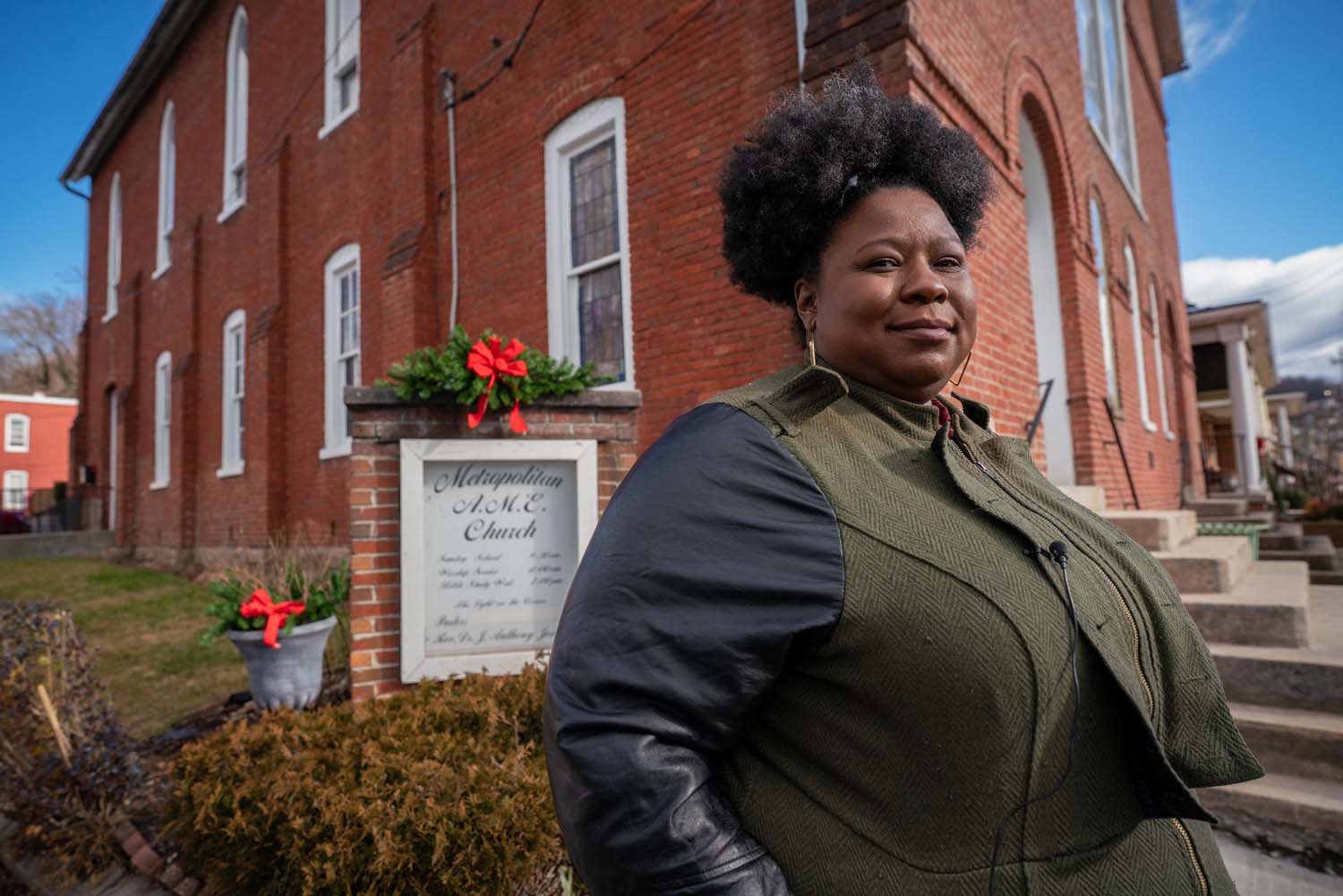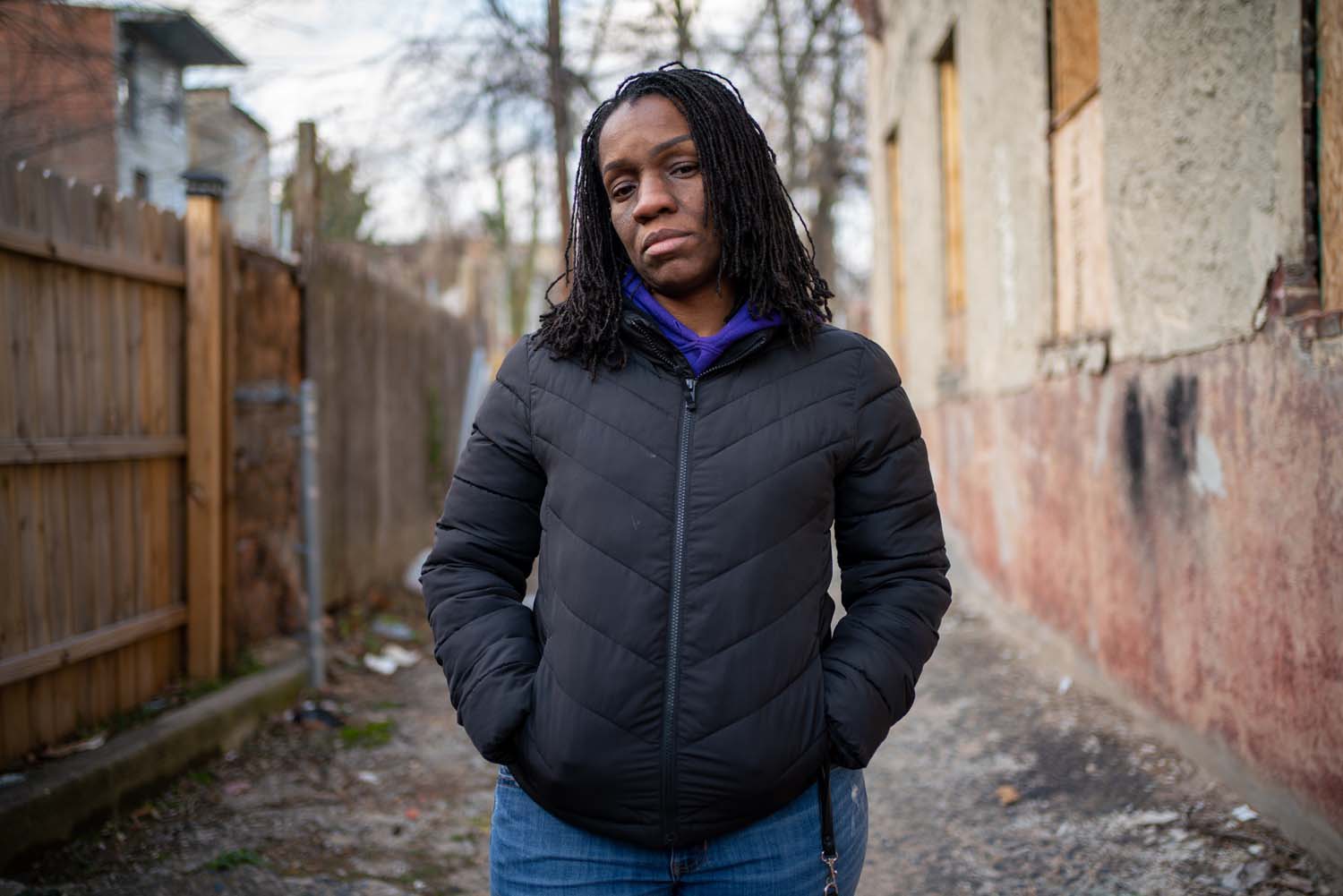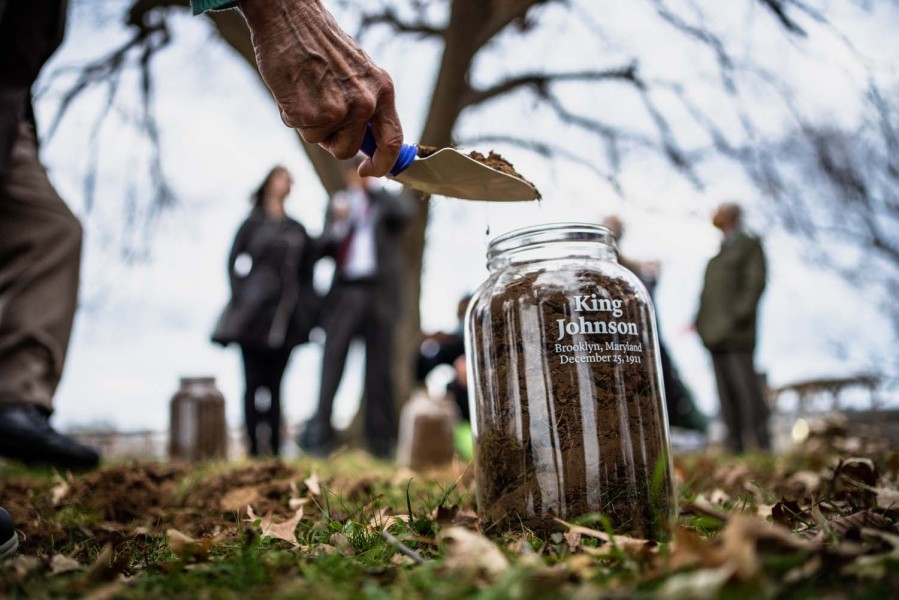By Sean Yoes
Terror on the Eastern Shore
December 4, 1931, is a night that lives on in the minds of Black residents in Salisbury, Maryland, a small town along the state’s Eastern Shore. That cold winter night, a mob of more than 2,000 racist residents hung 18-year-old Matthew “Buddie” Williams from a tree in the town’s courthouse square.
The festive aura of Christmas lights, ornaments, and displays of piety contrasted starkly with scenes of the bloodthirsty mob going after Williams, a Black man. The crowd of white vigilantes tossed him from a window of the Peninsula General Hospital’s Negro Ward. Blindfolded by a bandage wrapped around his head to dress one of several gunshot wounds he suffered earlier that day, Williams fell from the window into a sea of murderous white hands waiting below. He was dragged from the hospital to the courthouse several blocks away, and along that violent path, white citizens of Salisbury punched, kicked, stabbed, spat upon, and allegedly shot him again before ultimately hanging him.
Horrified Black hospital workers and Black employees of the old Wicomico Hotel across the street from the courthouse witnessed the young man’s torture and murder. Meanwhile, members of the Delmar and Wicomico high school football teams, who were having dinner at the hotel, plunged into the orgy of violence. Other residents who were shopping, eating, or who lived nearby joined in, and, by some accounts, the crowd eventually swelled to around 2,600 people—more than 10 percent of Salisbury’s entire population.
A headline in the Baltimore AFRO American Newspaper, which provided extensive coverage of Williams’ lynching, proclaimed, “Mob Toyed with Body 5 Hrs.,” in black letters against a blood-red backdrop. The newspaper’s coverage included the eyewitness account of Howard A. Nelson, a light-skinned Black man from South Philadelphia who was according to the newspaper “fair of skin and may be colored or white as he pleases.” Nelson’s account in the December 12, 1931, edition read:
"The rope was cut, and the body fell to the ground with a thud. A couple of men grabbed the part of the rope which still was around the victim’s neck and started down Main Street. They went down three blocks to a lot bordering the colored residential section. Here, they forced the attendant of a garage and filling station to give them gasoline. He refused, and several men of the mob obtained five-gallon cans and took 45 gallons of gasoline. They spread newspapers over the body and then poured on the gasoline. They ignited the paper and as the flames leaped into the air, they sent up a roar which was deafening. The leaders of the mob continued to add the gasoline to the body. The stench of the burning flesh was unbearable and I left, for fear of detection."
The newspaper also reported that the mob “cut off [Williams’] fingers and toes, threw them on the porches and in the yards of the colored people’s homes, shouting…that they could make ‘nigger’ sandwiches out of them.”
In Salisbury, Jagged Narratives Spoken in Whispers
To this day, nobody knows exactly what happened in the hours before Williams’ murder. The details of a financial dispute between Williams and his white employer, Daniel J. Elliot, who was shot to death on the same day, and Elliott’s son, James, are murky at best. What is known is that Williams was shot multiple times and seriously injured several hours before his violent death. No one was ever identified or prosecuted for his murder.
The complete impunity for Matthew Williams’ lynching and dismemberment sent a clear message to the members of Salisbury’s Black community: Any perceived threat to white supremacy would not stand, and if anyone dared to speak about what happened to Williams, they could have been next.
Because of this pervasive fear, the memory of Williams’ story and his ghastly slaughter was preserved only through whispers for generations. The jagged pieces of the narrative haunted his descendants and many others for decades. Jeannie Jones, one of those descendants, spoke about the mystery that long surrounded the story. “I can’t tell you how many times I used to hear my mother talking to her mother, and they would talk about the Eastern Shore, or things you better keep quiet…and then, it would cut off.” Jones only finally learned the details of his death in 2020.
A Commission Seeks to Unveil the Truth
A more complete picture of Williams’ death finally emerged through the work of the Maryland Lynching Truth and Reconciliation Commission (MLTRC). Formed in 2020, the MLTRC is tasked with investigating the state’s history of lynchings and supporting communities as they grapple with the effects of past and present racial terror. The commission has already documented at least 40 known racially motivated lynchings in Maryland, gathering oral histories, documents, and other artifacts. The MLTRC accompanied the Salisbury community when it erected a monument last summer in honor of Williams and two other Black men who were killed in the area: Garfield King, who was lynched on May 25, 1898, and an unknown man who was lynched the day after Williams.
At the dedication ceremony of the monument in downtown Salisbury, where both the Peninsula General Hospital and the Wicomico Hotel still stand, Jones and her teenage daughter Jordyn read an original poem they wrote together entitled “Justice, or Just Us.” Jones recited: “I am the descendant of Matthew Williams, born in 1908. Another baby was born in 1973, his name George Floyd. A lot has changed. But, their lives, lynched, marked null and void.”
“It’s very simple,” said MLTRC co-chair, Dr. Charles Chavis, about the commission. “We want justice for those communities… A very important first step in the work of the commission is we are tasked with investigation. What we know about a lot of these cases is…none of them were ever properly investigated. None of these individuals were even given a chance,” said Dr. Chavis, who is also the author of The Silent Shore: The Lynching of Matthew Williams and the Politics of Racism in the Free State. “We have to be able to do the due diligence of investigating and figuring out who was involved in these cases. And also, what are the connections between the racial terror lynchings of old and the oppression we see today.”
Similar truth-seeking commissions in other contexts have advanced justice and helped victims and communities heal. “Having accompanied similar processes in different countries around the world, we’ve seen how important it is to acknowledge what’s happened and uncover the full depth of the violations that took place,” said Virginie Ladisch, senior expert at the International Center for Transitional Justice (ICTJ), an organization that advocates and works in countries that have endured massive human rights violations. ICTJ has been working closely with the MLTRC and other local initiatives across the state, helping develop restorative justice responses to centuries of racial violence and terror.

In Cumberland, A Dark Past Looms Large
A four hours’ drive northeast of Salisbury, in Cumberland, Maryland, Tifani Fisher guides a group over to the Emmanuel Episcopal Church in the center of town on a winter’s night in late 2021. Fisher is the indefatigable president of the Allegany County branch of the NAACP and a member of the Allegany County Lynching Truth and Reconciliation Committee (ACLTRC). Despite the bone-chilling cold, she leads a tour through the mountainside town that retraces the perilous final hours of the life of another young Black man: Robert Hughes, who was referred to in historical records as William Burns, was lynched here on October 6, 1907. He was 18 years old.
Emmanuel Episcopal and the tunnels beneath it are the first stop on the tour. The historic church was part of the Underground Railroad, the pathway to freedom for thousands of runaway enslaved Americans. On the tour is Tiffany Brown, Fisher’s cousin and the NAACP’s community engagement chair. Brown, however, decided not to descend into the church’s tunnels that day. “I kind of don’t want to step back into history unless it is for the work that needs to be done today,” said Brown, a Cumberland native. “I’m 47 years old, and I left in 1992, when I was 18. I came back three years ago after 26 years and so much is the same,” she added. “It feels like nothing has changed. So, to go down in there, I’d still be in the past, and I’m not here for that.”
Much like Salisbury, downtown Cumberland has undergone very few physical changes since the early twentieth century. Fisher and Brown contend that there has been little progressive change in the town when it comes to its Black community. To them and many other Black residents, Cumberland is frozen in time.
“As much as we were separate at that time, we are still separate now,” Fisher explained, as she led the group through the town’s fragmented Black neighborhoods. Fisher proudly identifies herself as a “Brownsville Baby,” referring to a community of free Black Americans established in 1866. Brownsville flourished until the 1950s, when its residents were essentially displaced by the burgeoning Frostburg State University.
“My family actually originates from Garrett County, Maryland, which is even further up the mountain… [W]e built a Black community there, and they were pushed out when Garrett County, which used to be a part of Allegany County, separated and became a sundown county,” explained Fisher. A “sundown county” refers to a county where any Black person caught after sundown faced the very real possibility of being lynched.
Fisher ended the tour back at Emmanuel Episcopal Church, where on that fateful October day in 1907, a mob of hundreds of white residents beat 18-year-old Robert Hughes (also known as William Burns) to death. Hughes had been accused of killing August Baker, a white police officer, after allegedly starting a drunken fight at a local saloon, though it was never proven. Like Matthew Williams and thousands of other lynching victims, no one was ever identified in or prosecuted for Hughes’ murder.
“A mob came [to the jailhouse] and demanded the keys, and the keys were given, and they dragged this young man out,” Fisher recounted. “They took turns beating him…and as one group got tired, they brought in another group. They beat him to death,” she said as tears welled in her eyes. Eventually, the rector of Emmanuel Episcopal dragged Hughes’ pulverized remains onto the church grounds. Only then did the assault cease.

For decades, Hughes’ family had little more than rumors to cling to in relation to his death. “It was not something that was discussed openly, really with anyone,” said Karen Hughes White, the great niece of Robert Hughes. Hughes White is co-founder of the Afro-American Historical Association of Fauquier County in Virginia, a museum and resource center with more than 1,600 artifacts that chronicle the history of Fauquier County’s Black residents.
In the late 1980s, she and her sister, Angela Hughes Davidson, began painstakingly piecing together elusive clues about the murder of their great uncle. Still, after many years of research, gaping holes in the story remained—that is, until the summer of 2021 when Hughes White received a phone call from Clory Jackson, co-chair of the ACLTRC and founder of the Brownsville Project, inquiring about her great uncle. The ACLTRC had conducted extensive archival research and uncovered that the real name of the man known as William Burns who had been lynched in Cumberland was in fact Robert Hughes. The ACLTRC dedicated a historical marker to William Burns in August 2021, which memorializes his untimely death.
On October 2, 2021, the MLTRC held its first public hearing in Allegany County, and the Hughes sisters testified in memory of their great uncle. Thanks to the work of the MLTRC and ACLTRC, more than a century after Hughes’ horrifying murder, his family is finally experiencing a measure of long-sought closure.
“Evidence concluded that William Burns was indeed our Great Uncle Robert W. Hughes. We are here today because Robert was the victim of a lynching. It has been described as horrific, and yet, not a lot different from other such events described and recorded in America’s history,” said Hughes Davidson, speaking at the public hearing. Her voice quivered as she wiped tears from her eyes. “Our Uncle Robert’s fate was like that of far too many African-American men. The shock of the circumstances of Robert’s death brought another portion of America’s ugly history to our family’s doorstep.”
“It is essential to continue the work of tracing the connection between violations that occurred in the past and violations that continue today, even if in different forms,” explained ICTJ’s Ladisch, emphasizing the importance of such truth-seeking initiatives. “Once there is a clear sense of the enduring consequences and persistent harms, it is essential to consult with those who have been affected by these violations to see what remedies they seek and what reparations would look like for them.”
The MLTRC co-chair agrees. “The goal is justice,” said Dr. Chavis. “But, what exactly does justice look like for them? That’s a decision that the community of the descendants of racial terror and lynchings have to work through together.”
A History of Violence Haunts Maryland’s Present
“Oppression isn’t really changing, the form it takes changes,” said Nicholas Creary, a professor of history and government at Bowie State University and a member of the MLTRC. “As important as the memorials are, we need to do more than that. Where is any sense of justice for the communities where the lynchings occurred, where in many cases people are still being terrorized, whether it is by police violence or other forms of institutionalized white supremacy?”
In Salisbury, for example, nearly 100 years after the murder of Matthew Williams, oppression still stifles much of the Black community. “People get the same drug charge, Black person gets more time, white person gets less. I done seen it, that’s probably with every charge for real, for real,” said Daquan Savage, 23, a Salisbury native, who has experienced homelessness and incarceration. He’s currently under penal supervision for a gun charge. “I would rather get caught with it than without it, you know what I’m sayin’?… Tomorrow ain’t promised,” said Savage. “There’s nothing here. Nothing left in Salisbury.”
In nearby Baltimore, violence, poverty, and police brutality are pervasive at similar levels. The murder of Freddie Carlos Gray, Jr. by police prompted an uprising in 2015 and brought international attention to police abuses that have been committed against Black communities for generations.
Over-policing in Black American communities is rooted in the antebellum practice of slave catching, and, in many ways, is the modern-day form of lynching. “If we look at these killings, these lynchings, they happen in neighborhoods where you have blight, where the physical condition has eroded in such a way that it has damaged the mental, emotional, and economic health of the people,” explained Nneka Nnamdi, founder of Fight Blight Bmore and co-creator of the Stop Oppressive Seizures Fund. She believes that centuries of racial terror and its legacies in the Deep South, as well as western Maryland and the Eastern Shore, carried over into cities like Baltimore, where injustice and impunity has persisted. At the foundation is a history of virulent systemic racism and oppression.

“On the Eastern Shore, in western Maryland, in Rocky Mount, North Carolina, where my people are from, your other family members were like, ‘We’re on the train to Baltimore,’ and they made a life up here,” Nnamdi said. “Nobody talked about that [lynching], because who wants to talk about the fact that you left your great aunt hanging in a tree on the Eastern Shore? Had to leave her body hanging in a tree, or had to leave your great uncle on the ground where he laid at?”
The ghosts of racial terror continue to haunt Maryland and the United States as a whole, which is why the work of the MLTRC, ACLTRC, and other local efforts are critically important. These initiatives seek out ways to soothe generational trauma and help families find some measure of restoration.
“You can’t change the past, but it’s important to try to change the way the past continues to impact the present. What I would hope comes out of the process in Maryland, with the Maryland Lynching Truth and Reconciliation Commission and all of the community and county-level initiatives, is first raising awareness and highlighting stories that were suppressed or distorted in the media,” said Ladisch. “And then, with that awareness, we need to think collectively about what we need to do to address the harms and prevent them from continuing into the present and future. The solutions will vary from community to community, and we need to be there to listen and take action.”
At the MLTRC’s public hearing, Hughes Davidson described what it has meant for her and her family to finally learn the truth about what happened to her great uncle. “Robert Hughes’ descendants until 2021 were denied the truth of the events surrounding his death. We ask that today’s hearing serve as an example to others in this important work of truth and reconciliation,” she said. “Today’s proceedings demonstrate the desire of many in our society to acknowledge our country’s history, both the great and the terrible. We must listen to families who have experienced the results of lynching and realize it tears a community’s residents, Black and white, apart.”
For more, visit the "Blood on the Root" photo slideshow.
___________
PHOTO: In Baltimore, Maryland, participants gather at the site where King Johnson was murdered on Christmas Day in 1911 and collect soil in his memory. (André Chung/ICTJ)
